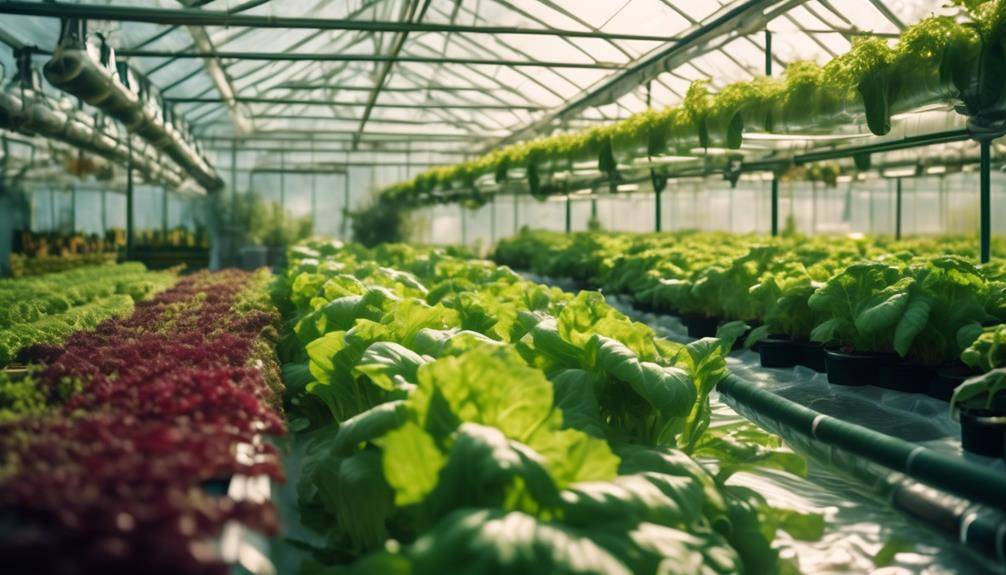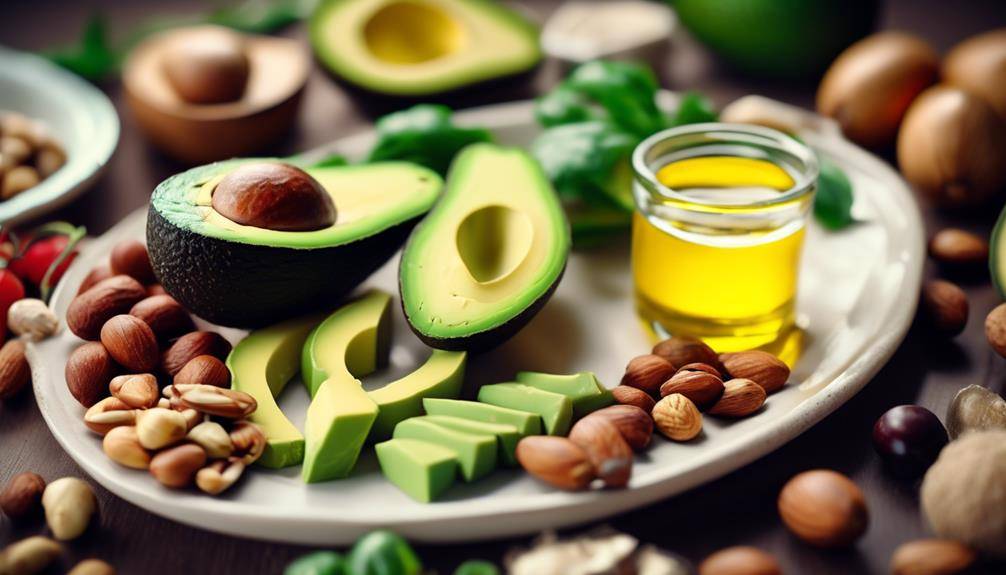Emerging Sustainable Farming Techniques In Hydroponics

They say, “You reap what you sow.” And in the world of Sustainable Farming Techniques in hydroponics, this adage holds true. With the increasing demand for food production and the limited availability of arable land, hydroponics has emerged as an innovative solution. But what makes hydroponics truly sustainable? How does it address the challenges of nutrient management, water conservation, pest control, energy efficiency, and waste management? In this discussion, we will explore the cutting-edge techniques and practices that make hydroponics a promising avenue for sustainable agriculture.
Nutrient Management
To effectively manage nutrients in hydroponics farming, you must carefully monitor and adjust the nutrient solution to ensure optimal plant growth and development. Nutrient management is crucial in hydroponics as it directly affects the health and productivity of your crops.
Crop selection is an important aspect of nutrient management in hydroponics farming. Different crops have varying nutrient requirements, and it is essential to choose crops that are well-suited for hydroponic systems. Consider factors such as growth rate, nutrient uptake, and tolerance to environmental conditions when selecting crops for your hydroponic farm. This will help ensure that the nutrient solution is tailored to meet the specific needs of the chosen crops.
Furthermore, if you are aiming for organic certification, it is important to carefully manage the nutrients in your hydroponic system. Organic certification requires the use of organic nutrient sources and the exclusion of synthetic fertilizers. This means that you need to ensure that your nutrient solution consists of organic nutrients and that you avoid any synthetic additives or chemicals. Regular testing of the nutrient solution is necessary to confirm that it meets the organic certification requirements.
In addition to crop selection and organic certification, it is crucial to maintain proper nutrient balance in your hydroponic system. This involves monitoring the nutrient levels in the solution and making adjustments as necessary. By regularly testing and analyzing the nutrient solution, you can identify any deficiencies or excesses and take corrective actions. Balancing the nutrient solution ensures that your plants receive the right amount of nutrients they need for healthy growth and optimal yield.
Water Conservation
Water conservation is a critical aspect of hydroponics farming, as it ensures the efficient and sustainable use of this valuable resource. In hydroponics, there are several techniques that can be employed to conserve water, such as drip irrigation and rainwater harvesting.
Drip irrigation is a method that delivers water directly to the root zone of the plants, minimizing water loss due to evaporation and runoff. It involves the use of a network of tubes with small holes or emitters that release water slowly and evenly. This technique not only reduces water wastage but also allows for precise control over the amount of water each plant receives.
Rainwater harvesting is another effective way to conserve water in hydroponics farming. By collecting and storing rainwater, farmers can reduce their reliance on freshwater sources. Rainwater can be collected from rooftops or other surfaces and stored in tanks or reservoirs. It can then be used for irrigation purposes, reducing the need for tap water. This not only conserves water but also reduces the strain on local water supplies.
In addition to drip irrigation and rainwater harvesting, it is important to monitor and manage water usage in hydroponics systems. This can be done through regular monitoring of water levels, checking for leaks or malfunctions, and adjusting irrigation schedules to match the needs of the plants. By implementing these water conservation techniques and practices, hydroponics farmers can ensure the sustainable use of water resources while maximizing crop yield and minimizing environmental impact.
Pest Control
Implementing effective pest control measures is crucial in hydroponics farming to ensure the health and productivity of the plants. In hydroponics, where plants are grown in a soilless medium, pests can still pose a significant threat. However, there are sustainable pest control techniques that can be utilized to minimize the damage caused by pests.
Companion planting is one such technique that can help control pests in hydroponics. By strategically planting certain crops alongside each other, you can create a natural barrier that repels pests. For example, planting marigolds near tomatoes can deter aphids and whiteflies. Similarly, basil is known to repel thrips, which are common pests in hydroponic systems. By incorporating companion planting into your hydroponic setup, you can reduce the reliance on chemical pesticides.
Another sustainable pest control method in hydroponics is biological control. This involves introducing beneficial insects or organisms that prey on pests, effectively keeping their populations in check. For instance, ladybugs are voracious predators of aphids and can be introduced into the hydroponic system to control aphid infestations. Additionally, predatory mites can be used to control spider mites, a common pest in hydroponics. By harnessing the power of nature, biological control can provide a long-term and environmentally friendly solution to pest management in hydroponics.
Energy Efficiency
Maximizing energy efficiency is essential in hydroponics farming to optimize resource utilization and minimize costs. To achieve this, there are several key considerations you should keep in mind:
- Smart technology integration: Incorporating smart technology into your hydroponics system can help you monitor and control energy usage more efficiently. Automated sensors can regulate lighting, temperature, and nutrient delivery, ensuring optimal conditions for plant growth while minimizing energy waste.
- Energy-efficient lighting: Choosing the right lighting system is crucial for energy efficiency. LED lights are a popular choice in hydroponics farming due to their high energy efficiency and long lifespan. They produce less heat, reducing the need for additional cooling, and can be programmed to provide specific light spectra tailored to plant needs.
- Efficient greenhouse design: Proper greenhouse design plays a significant role in energy efficiency. Utilizing materials with high insulation properties, such as double-pane glass or polycarbonate panels, helps to reduce heat loss and maintain a stable internal climate. Additionally, incorporating shading systems can regulate light intensity and reduce the need for artificial lighting.
- Renewable energy sources: Integrating renewable energy sources into your hydroponics system can significantly reduce energy consumption and associated costs. Solar panels, for example, can power lighting and other electrical components, making your operation more sustainable.
- Energy management and optimization: Regularly monitoring and optimizing energy usage is crucial for achieving maximum efficiency. Analyzing data from smart sensors and energy meters can help identify areas of improvement and inform decision-making to minimize energy waste.
Waste Management
To effectively manage waste in hydroponics farming, it is important to implement proper disposal methods and optimize nutrient recycling. Waste management plays a crucial role in maintaining the sustainability of hydroponic systems. One key aspect of waste management is the use of composting techniques to convert organic waste into nutrient-rich compost that can be used as a soil amendment.
Composting is a natural process that decomposes organic materials, such as plant trimmings and root systems, into a stable compost that can be used to enrich the growing medium. There are various composting techniques that can be utilized in hydroponics farming, including aerobic composting and vermicomposting. Aerobic composting involves the breakdown of organic waste by microorganisms in the presence of oxygen, while vermicomposting utilizes worms to accelerate the decomposition process.
In addition to composting, recycling methods can also be employed to manage waste in hydroponics farming. For example, the nutrient solution used in hydroponic systems can be recirculated and reused, minimizing both water and nutrient wastage. This can be achieved through the use of nutrient film technique (NFT) or deep water culture (DWC) systems, where the excess nutrient solution is collected, filtered, and reintroduced into the system.
Furthermore, the use of biofilters can help in the recycling of waste in hydroponic systems. Biofilters are designed to remove excess nutrients and organic matter from the water, reducing the need for frequent nutrient solution changes and minimizing waste production.
Sustainable Farming Techniques; Frequently Asked Questions
How Do Hydroponic Farmers Manage Pests Without Using Harmful Chemicals?
To manage pests without harmful chemicals, hydroponic farmers use a variety of pest management techniques. These include organic pest control methods like introducing beneficial insects, using physical barriers, and regularly monitoring plants for signs of infestation.
What Are Some Innovative Ways Hydroponic Farmers Conserve Water in Their Systems?
To conserve water in hydroponic systems, you can use water-saving techniques such as recirculating nutrient solutions, implementing drip irrigation, and using moisture sensors. These sustainable irrigation methods help minimize water waste and ensure efficient water usage.
Are There Any Specific Nutrient Management Techniques That Hydroponic Farmers Use to Ensure Sustainable Farming Practices?
To ensure sustainable farming practices in hydroponics, you can optimize nutrient management techniques. By carefully monitoring and adjusting nutrient levels, you can provide your crops with the essential elements they need for healthy growth. Additionally, implementing crop rotation can help prevent nutrient imbalances and maintain long-term soil fertility.
How Do Hydroponic Farmers Ensure Energy Efficiency in Their Systems?
To ensure energy efficiency in hydroponic systems, you can use energy-efficient lighting like LED. Additionally, recycling nutrients by using a nutrient reservoir and adjusting nutrient levels can help optimize energy usage.
What Steps Do Hydroponic Farmers Take to Minimize Waste and Promote Waste Management in Their Operations?
To minimize waste and promote waste management in hydroponic farming, you can implement waste reduction strategies such as composting and recycling techniques. These methods ensure a sustainable and efficient operation while minimizing environmental impact.
Conclusion
In conclusion, sustainable farming techniques in hydroponics offer a promising solution for efficient and eco-friendly agriculture. By effectively managing nutrients and conserving water, farmers can ensure optimal plant growth while minimizing environmental impact. Implementing pest control measures and adopting energy-efficient practices further enhance sustainability. Additionally, proper waste management ensures minimal waste and promotes a circular economy. By embracing these techniques, farmers can contribute to a more sustainable and resilient agricultural system.








